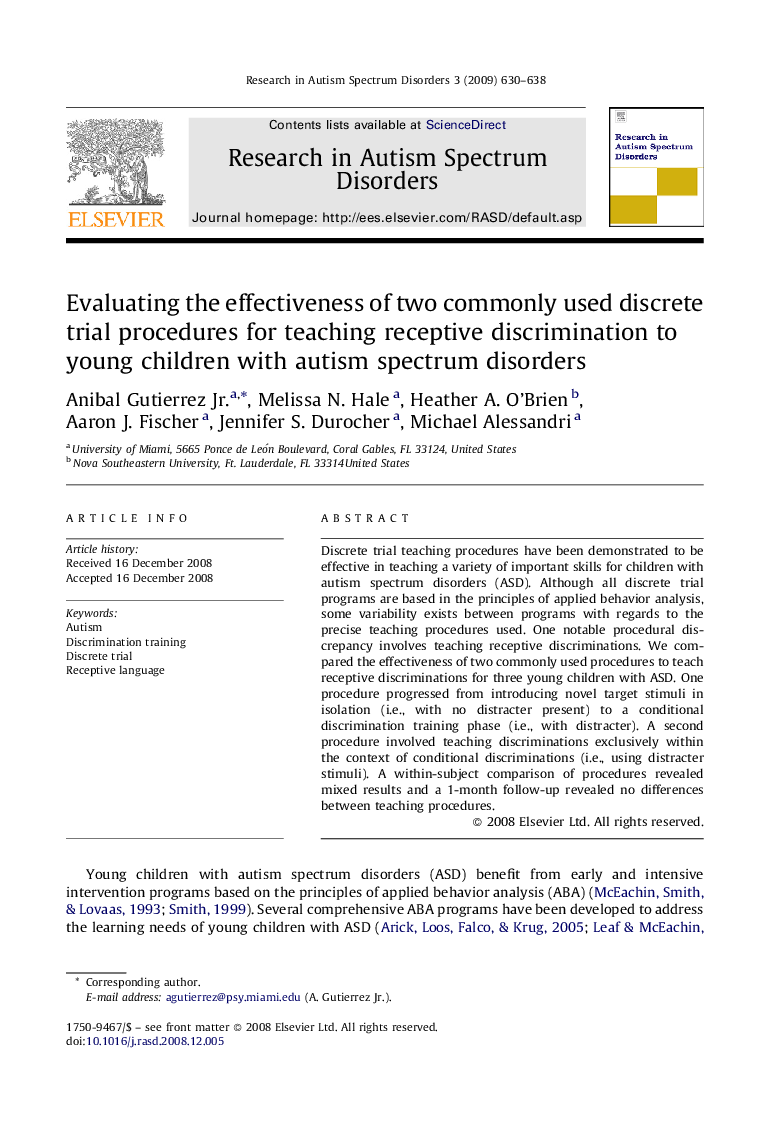| Article ID | Journal | Published Year | Pages | File Type |
|---|---|---|---|---|
| 370908 | Research in Autism Spectrum Disorders | 2009 | 9 Pages |
Discrete trial teaching procedures have been demonstrated to be effective in teaching a variety of important skills for children with autism spectrum disorders (ASD). Although all discrete trial programs are based in the principles of applied behavior analysis, some variability exists between programs with regards to the precise teaching procedures used. One notable procedural discrepancy involves teaching receptive discriminations. We compared the effectiveness of two commonly used procedures to teach receptive discriminations for three young children with ASD. One procedure progressed from introducing novel target stimuli in isolation (i.e., with no distracter present) to a conditional discrimination training phase (i.e., with distracter). A second procedure involved teaching discriminations exclusively within the context of conditional discriminations (i.e., using distracter stimuli). A within-subject comparison of procedures revealed mixed results and a 1-month follow-up revealed no differences between teaching procedures.
